WHAT IS WATER SHORTAGE?
Water shortage is defined as situations where there is insufficient local water to meet human needs (Water Scarcity Atlas, n.d.). This water scarcity can be driven by population growth or by low water availability, where the availability of water is subjected to the physical amount of the resource and the supply systems.
Water scarcity is also exacerbated by climate change, pollution, lack of protection of ecosystems on which natural water production depends, and water-intensive products as well as inefficient and wasteful use (Schleifer, 2017).
WATER SHORTAGE EFFECTS
When water is scarce, people are affected in many ways. There is not enough water to drink, wash, feed crops, and have adequate sanitation, causing a possible economic decline. According to The World Bank, some regions could experience a decrease of 6% of their GDP (Gross Domestic Product) due to water scarcity that is exacerbated by climate change (World Bank Group, 2016). It can also spark conflict, violence, migration, and food price increases.
Inadequate sanitation can also lead to deadly diarrheal diseases, including cholera and typhoid fever, and other water-borne illnesses (WWF, n.d.). Water is an essential component to children’s survival and their development, including health, nutrition, education, safety, and economical welfare (Programme Division United Nations Children’s Fund, 2021).
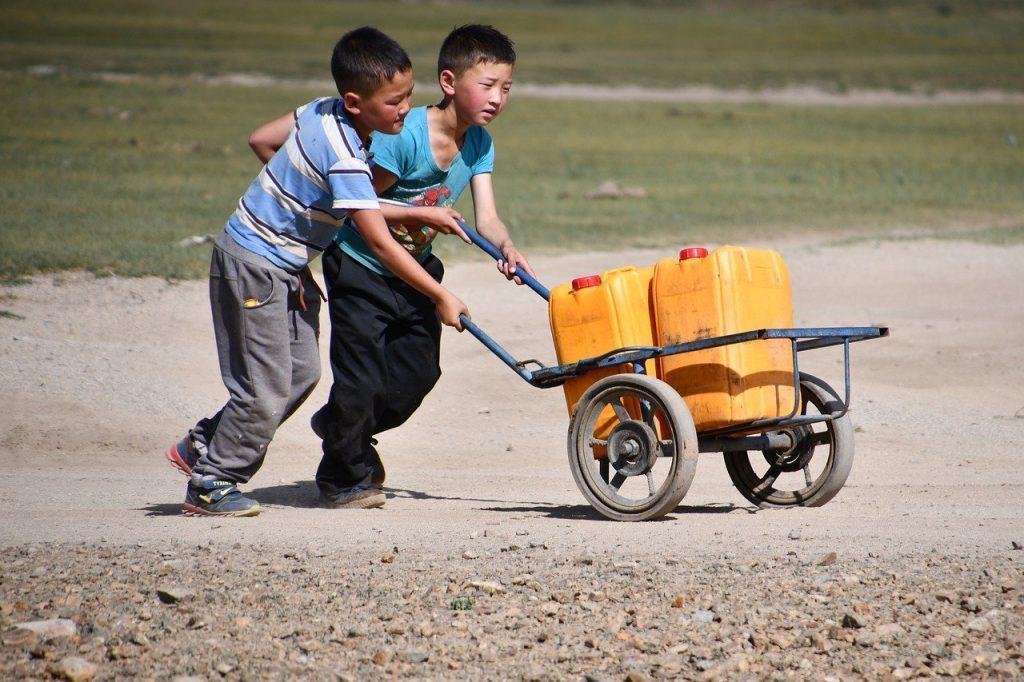
SOME STATISTICS
- 1.1 billion people lack access to water and 2.7 billion experience water scarcity at least one month a year (WWF, n.d.).
- According to The United Nations World Water Development Report 2021, over 3 billion people lack adequate access to hand hygiene facilities, while 50% of all malnutrition are caused by a lack of Water, Sanitation and Hygiene (WASH), 71% of the global population used a safely managed drinking water service, and 45% of the global population used safely managed sanitation services (Unesco & World Water Assessment Programme, 2021).
- Water scarcity could displace 700 million people by 2030 (UN Department of Economic and Social Affairs, n.d.).
WATER SHORTAGE SOLUTIONS
As the water shortage crisis becomes more evident year after year, the attempts to find solutions to solve this problem have also increased. Diversification and efficient management of water intake source, safe and clean water production, efficient water supply and monitoring as well as an integrated management are some of the solutions that focus on efficient water management to solve the water shortage problem (KICT, 2016).
SMART WATER
Efficient water management is the ultimate goal of Smart Water, and it encompasses the aforementioned solutions. Smart Water is defined as a group of emerging technological solutions that help water managers operate more effectively (Maize, 2018).
DIVERSIFICATION AND EFFICIENT MANAGEMENT OF WATER-INTAKE SOURCES
This solution includes the use of different water sources, such as rainwater, seawater, and reused wastewater. It also incorporates the efficient management of these sources. For instance, treatment systems on sidewalks allow for a better urban water cycle management (KICT, 2016).
Moreover, urban water cycle management and disaster prevention have become an important issue globally, especially with the threat of climate change. Since the surfaces of urban areas are mostly impermeable, flash floods and heat island phenomena have been observed. Hence, this technology can help to induce the evapotranspiration of the vegetation and allows for the temporary storage and reuse of rainfall, in which rainwater on the sidewalks can penetrate into the soil through the permeable pavement, where the water that exceeds the retention capacity of the soil is transported into a storage tank. The runoff from the impermeable roads is also conducted to the storage tank, after being treated in a first flush treatment tank, hence, the stored rainwater is used for the vegetation during non rainfall periods.
Another example is reclaimed wastewater, which is water discharged from buildings and processes that is treated, and then reused in irrigation and industrial processes (Federal Energy Management Program, n.d.). Reclaimed wastewater is mostly treated to non-potable levels, while filtration and disinfection is used to remove contaminants and particulates, and then distributed through a different distribution system.
Although uncommon, reclaimed wastewater can also be treated to potable standards. Generally, this can be done with two systems: Direct potable reuse (DPR) and indirect potable reuse (IPR) (Federal Energy Management Program, n.d.). DPR sends reclaimed waste water directly to a potable water treatment plant, which is distributed through the potable distribution system after being treated. In contrast, IPR sends reclaimed wastewater to a natural watershed that acts as an environmental buffer, where water can be withdrawn later and sent to a potable water treatment plant.
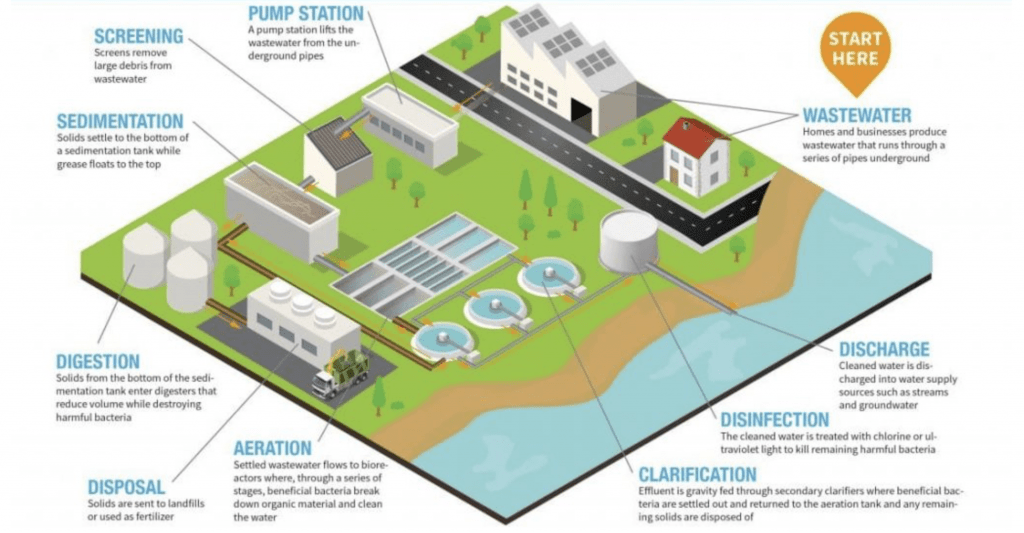
SAFE AND CLEAN WATER PRODUCTION
Water treatment enhancement, water treatment automation, and remote and real-time quality monitoring are some of the alternatives for achieving safe and clean water production.
An example of the water treatment automation are cloud-based image water level gauges. This technology is an alternative to malfunctioning sensors and CCTVs (Closed Circuit Television) that collect data and directly monitor water levels (Kim et al., 2014). This technology simultaneously measures and monitors water levels using CCTVs, with minimized on-site installation and improved image monitoring function.
The system is composed of a camera that records images, the server that stores and analyses images through algorithms and number recognition, and the client that watches the images and results on a web-based program.
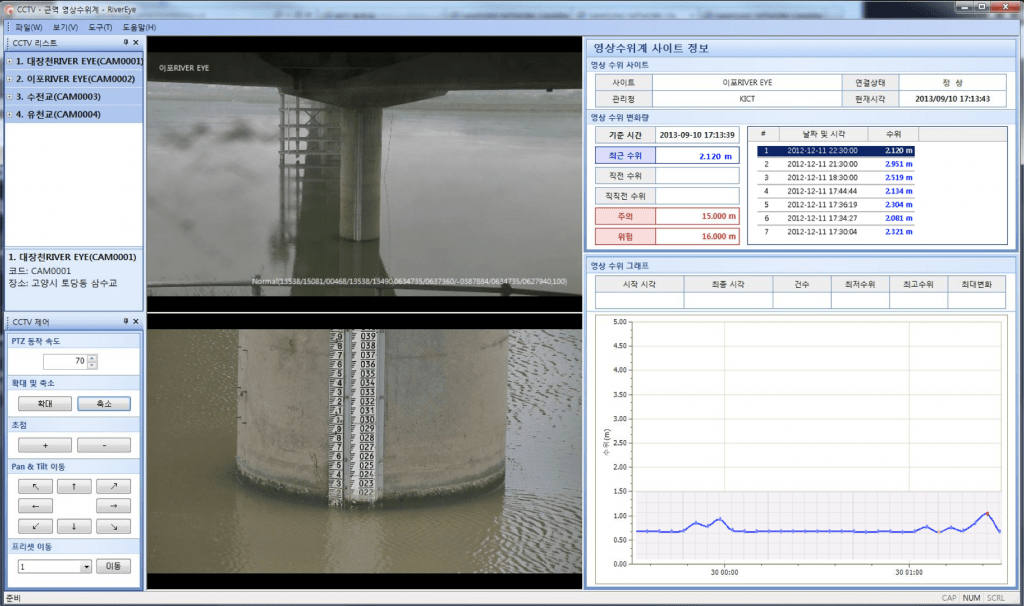
In addition, water quality monitoring is essential for water production. Monitoring in remote and isolated areas can be a difficult, time-consuming and expensive task. A more advanced and efficient option is to install a self-contained water monitoring station that takes readings automatically. The station, which cleans its sensors by itself and can be calibrated via internet, pumps water into a flow cell across a multi parameter probe, where the data is then sent via mobile networks (Aquaread, 2015).
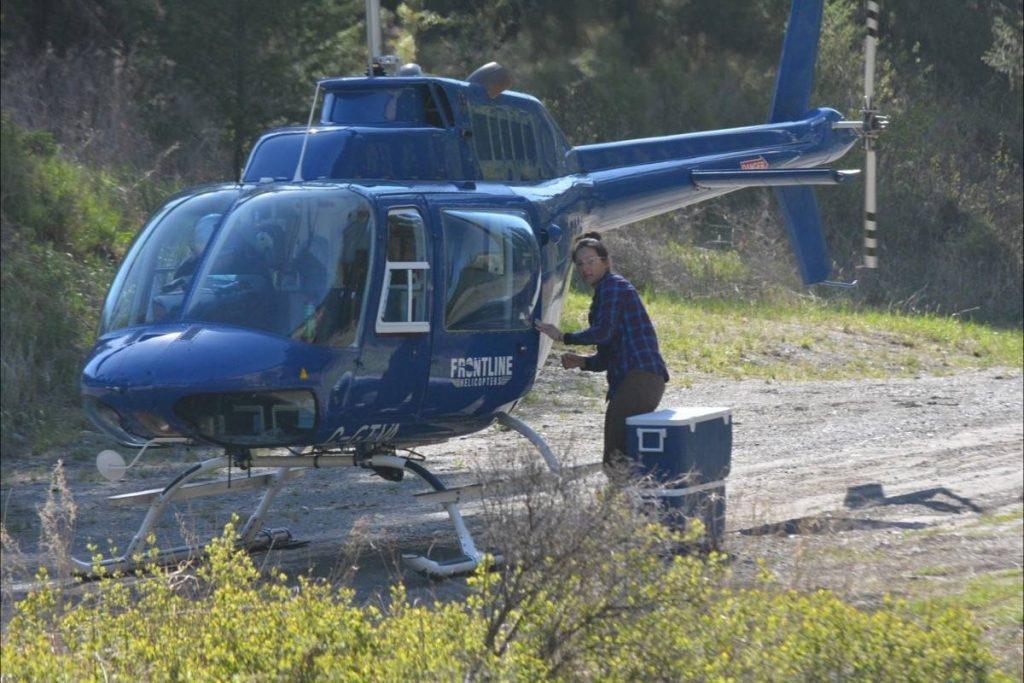
EFFICIENT WATER SUPPLY AND MONITORING
Hydraulic simulation models are essential for efficient water supply systems. Hydraulic simulators are numerical programs in which it is possible to implement models for water transportation and distribution (Coelho & Andrade-Campos, 2014). These models can replicate the nonlinear dynamics of the networks, allowing the users to get details about the elements of a distribution network, providing support for management and operational control. The integration of Geographic Information Systems (GIS) provides better visualization of the simulations, giving additional analysis possibilities (Coelho & Andrade-Campos, 2014).
Leak detection is paramount for effective distribution systems. In this regard, the best practice currently, is a combination between static leak detection systems and dynamic leak detection systems (El-Zahab & Zayed, 2019). Static leak detection systems provide early leak detection with minimal human interference, while dynamic systems provide immediate localization and pinpointing for leaks by mobilizing devices and personnel to suspected areas.
Some modern, state-of-the-art, leak detection technologies include: Listening devices, leak noise loggers, infrared thermography, tracer gas, ground penetrating radar, leak detecting robots, and wireless micro-electro-mechanical systems.
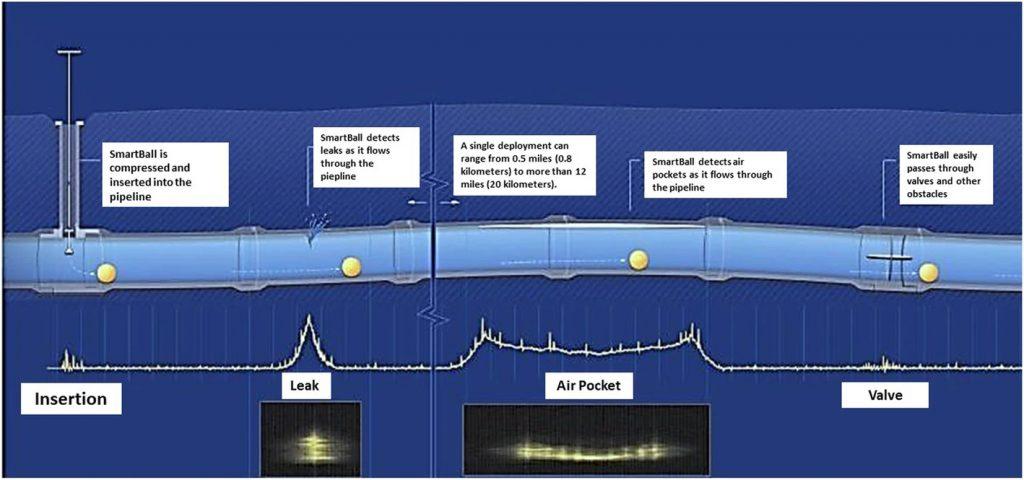
INTEGRATED MANAGEMENT
Traditional water management collects and deliver information at each stage of water production: Water resources (hydrology and water utilization), waterworks (water withdrawal, piped water transfer, water purification and treatment, and water delivery), and sewerage (sewage collection, sewage treatment, and recycling) (Kim & Kang, 2020). Hence, the Smart Water integrated management allows a multidirectional information sharing and feedback process from all these stages.
The 2012 Smart Water Grid White Paper defined Smart Water management as an information network that intelligently manages water resources by integrating various technologies, such as: Smart meters, state-of-the-art modeling, water mapping, smart irrigation agriculture, and automation robots (Kim & Kang, 2020).
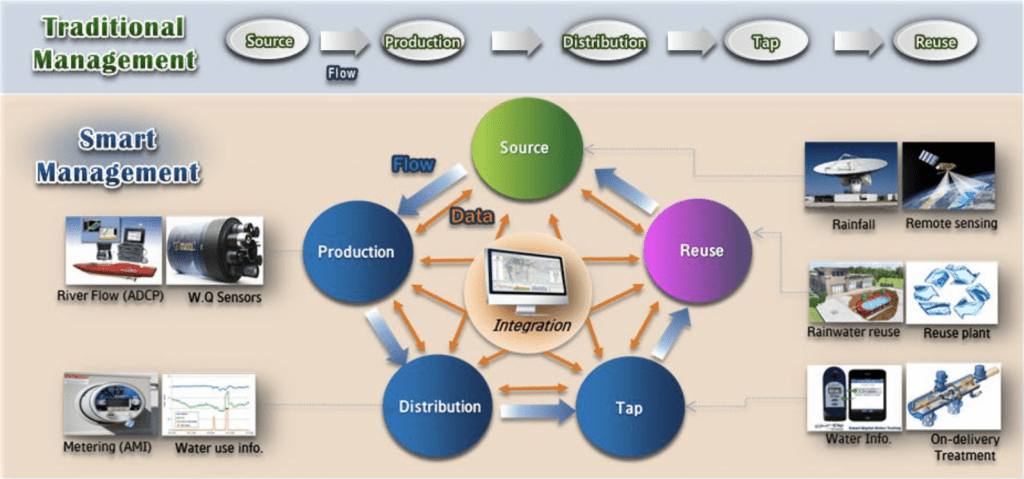
SOLVING THE WATER SHORTAGE PROBLEM
Water shortage is a reality that is expected to aggravate in the future, which is driven by population growth, climate change, and other factors. By 2025, 1.8 billion people will be living in countries or regions with absolute water scarcity and two-thirds of the world’s population could be living under water-stressed conditions (UN, 2014).
There are many actions that need to be taken, where efficient water management is one of the most important and final goals of Smart Water management. The water shortage problem requires a type of management that is automated, interconnected, and intelligent (Kim & Kang, 2020).
Moreover, the automated acquisition of information allows an increased situational awareness. Interconnectedness favors multi-directional information sharing and feedback, where the intelligence requires the ability to collect data to improve water management planning and policy making, performing predictive and prescriptive analysis.
At THRIVE, we believe in every action that protects water resources and in an efficient management and distribution of water. The wellbeing of all of us depends on it, therefore, action needs to be taken. From our own responsible consumption to knowing what other measures can be taken.
Your actions are important. For more information on how THRIVE can support your actions, please visit our webpage. If you want to know more about sustainability issues, read our blog.























